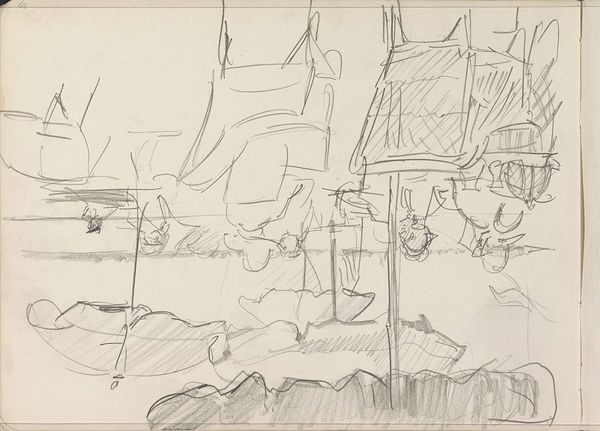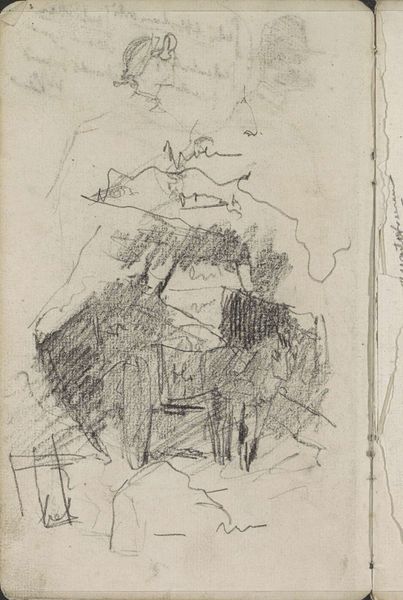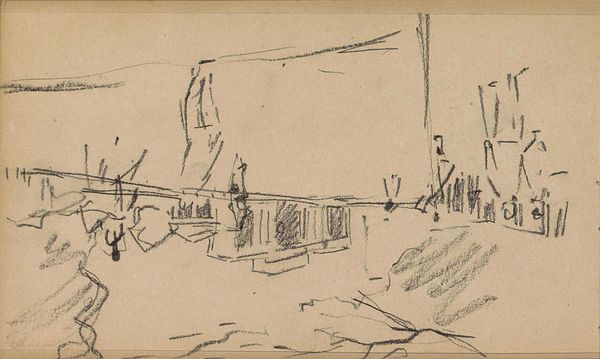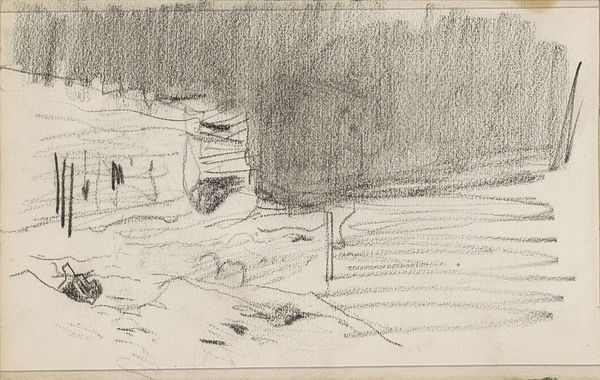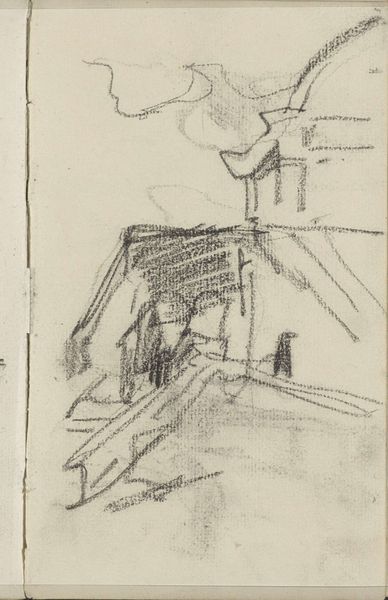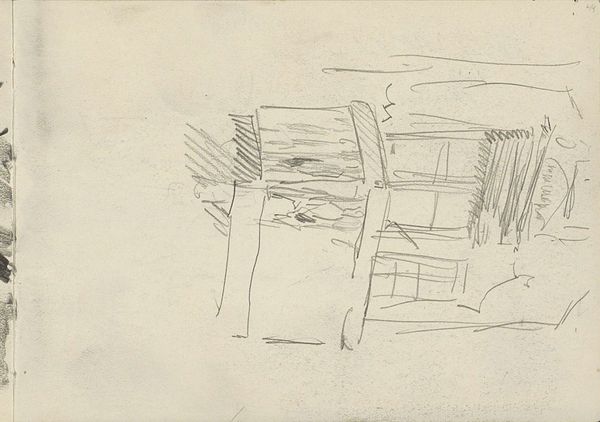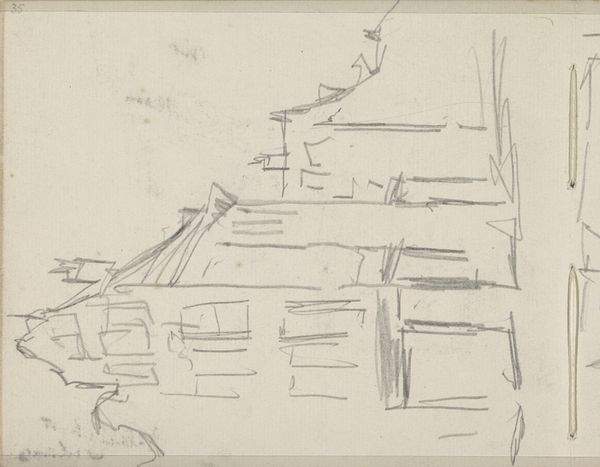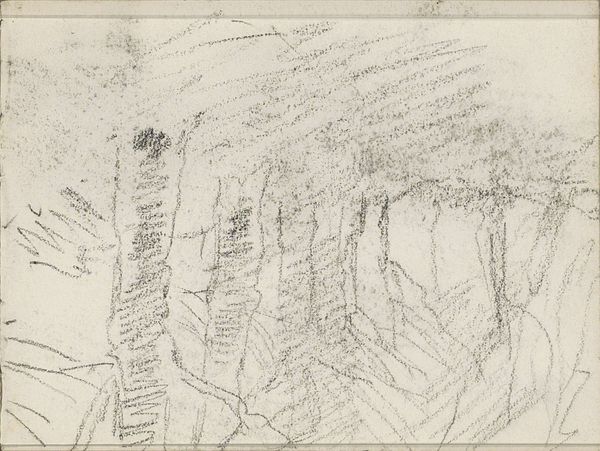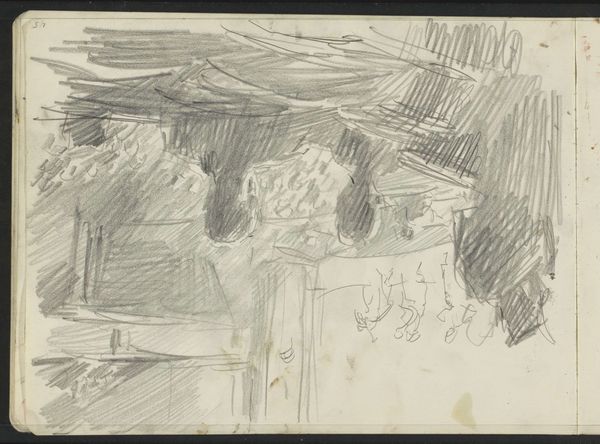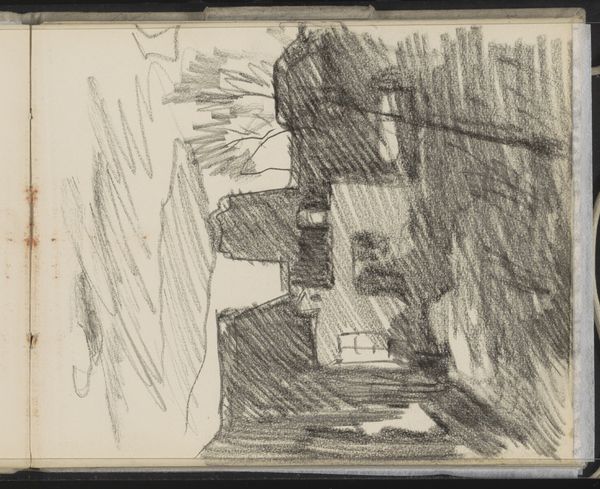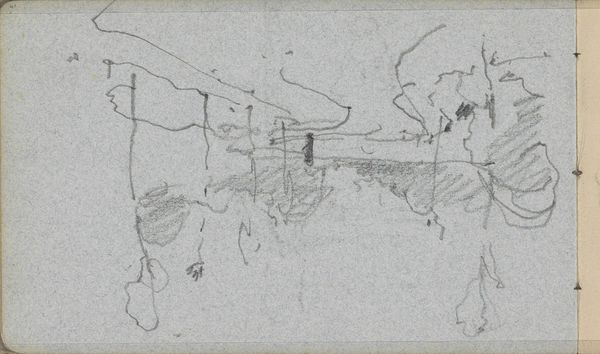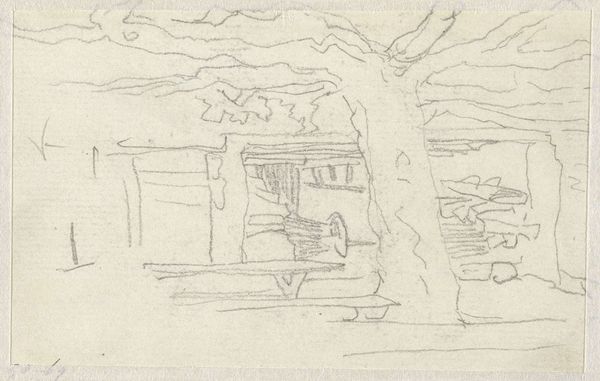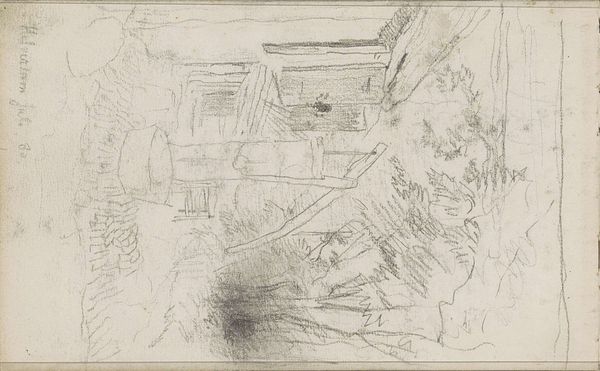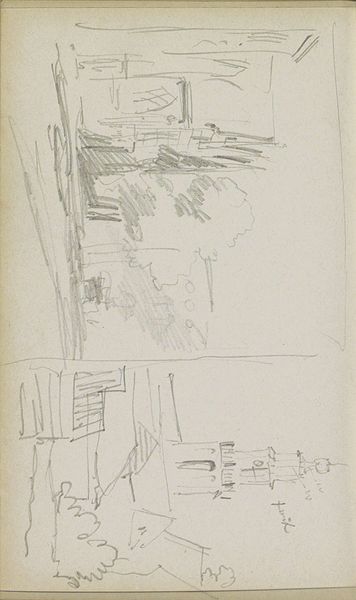
Copyright: Rijks Museum: Open Domain
Curator: Let’s turn our attention to "Landschap met een boerderij," or "Landscape with a Farm," a pencil drawing by Willem Witsen, dating from around 1906-1907, currently residing here at the Rijksmuseum. Editor: It’s incredibly raw. Just looking at the density of the pencil strokes, it feels like a momentary impulse captured in graphite, that immediacy almost overwhelms the subject itself. Curator: I find it quite telling as a reflection of Witsen’s era, given his privileged background; his commitment to portraying working-class subjects, like farm laborers here, reveals the increasing interest in the lives and struggles of common folk at the time. Do you think his portrayal here shows concern with class awareness? Editor: Hmm. I think it’s a bit of a reach to frame the portrayal as class-aware—especially given that it’s such a fleeting sketch. To me, the rapid execution suggests an interest in capturing the fleeting atmospheric conditions, and a more profound point, the actual labor involved in creating even a preliminary sketch: the pressure of hand on the paper, the depletion of the pencil. It shows all its marks, not intended for display in its time, meant more as a preparation and a labor itself. Curator: But think about landscape art's cultural value in that period. Witsen consciously avoids the romantic grandeur typical of earlier landscape painters. His choice of depicting ordinary rural life reflects the influence of social realism, which definitely aligns with political shifts where the working classes began asserting their identities. Editor: While social context undeniably shaped artistic trends, it is also crucial to consider artistic labor and the means of production—his quick sketching process. It gives primacy to the physical act of artistic creation. We are presented with labor as raw exposure through pencil to paper. Curator: Perhaps the dialogue we’ve just had encapsulates the way interpretations and perspectives should coexist; it can both engage us in labor relations and societal dynamics in unique and rewarding ways. Editor: Indeed, a material analysis is always incomplete without intersectional recognition, and contextual and activist insights deepen understanding, so let’s get lunch?
Comments
No comments
Be the first to comment and join the conversation on the ultimate creative platform.
